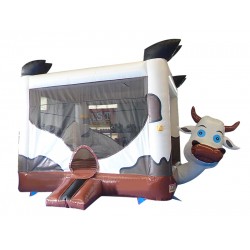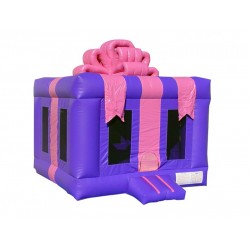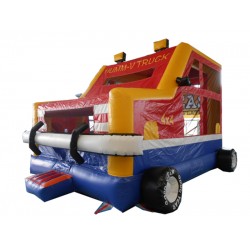Can You Use a Bouncy Castle Indoors?

Bouncy castles are a popular choice for entertaining children at parties and events. While they are commonly used outdoors, many people wonder if it is feasible and safe to set them up indoors. This article explores the considerations for using a bouncy castle indoors, including space requirements, safety, and logistical factors.
1. Space Requirements
Setting up a bouncy castle indoors requires careful planning due to space constraints:
- Size of the Bouncy Castle: Ensure that the indoor space is large enough to accommodate the size of the bouncy castle. Measure the dimensions of both the bouncy castle and the indoor area to ensure a proper fit.
- Ceiling Height: Check the ceiling height to ensure it is sufficient for the bouncy castle. Some designs, especially those with slides or large inflated areas, may require more vertical space than others.
- Clearance Space: Allow for extra space around the bouncy castle for safe play and supervision. This includes space for children to enter and exit the inflatable and for parents or supervisors to monitor activity.
2. Safety Considerations
Safety is a crucial factor when setting up a bouncy castle indoors:
- Flooring: Ensure that the flooring is suitable for the bouncy castle. Hard surfaces like concrete or tile can be dangerous if children fall. Consider placing mats or protective padding underneath the bouncy castle to cushion any falls.
- Ventilation: Proper ventilation is necessary to maintain the bouncy castle's inflation and ensure a safe play environment. Ensure that the indoor space is well-ventilated to avoid overheating and maintain air circulation.
- Obstacles and Hazards: Check for any potential hazards in the indoor space, such as sharp corners, hanging objects, or low ceilings, which could pose risks to children playing in the bouncy castle.
3. Installation and Setup
Proper installation is key to ensuring the bouncy castle is safe and functional indoors:
- Inflation: Ensure there is enough space for the bouncy castle to be fully inflated and that the blower can operate efficiently without obstruction.
- Anchoring: While outdoor bouncy castles are typically anchored to the ground, indoor setups may require different methods for securing the inflatable. Ensure the bouncy castle is properly stabilized to prevent movement during use.
- Access: Make sure the bouncy castle can be transported and set up indoors without damage. Check doorways, hallways, and entry points for adequate clearance.
4. Weather Considerations
Indoor use eliminates weather-related concerns, but there are still some considerations:
- Temperature Control: Ensure the indoor environment is comfortable for children. Extreme temperatures can affect the play experience and the performance of the bouncy castle.
- Humidity: High humidity levels can impact the bouncy castle’s materials and create a slippery surface. Keep humidity levels in check to maintain a safe play area.
5. Conclusion
Using a bouncy castle indoors is certainly possible and can be a great way to entertain children regardless of the weather. However, it requires careful planning and consideration of space, safety, and installation factors. By ensuring adequate space, addressing safety concerns, and properly setting up the bouncy castle, you can provide a fun and safe play experience indoors. Always consult with bouncy castle rental professionals to ensure all aspects of indoor use are addressed.






Leave a Comment